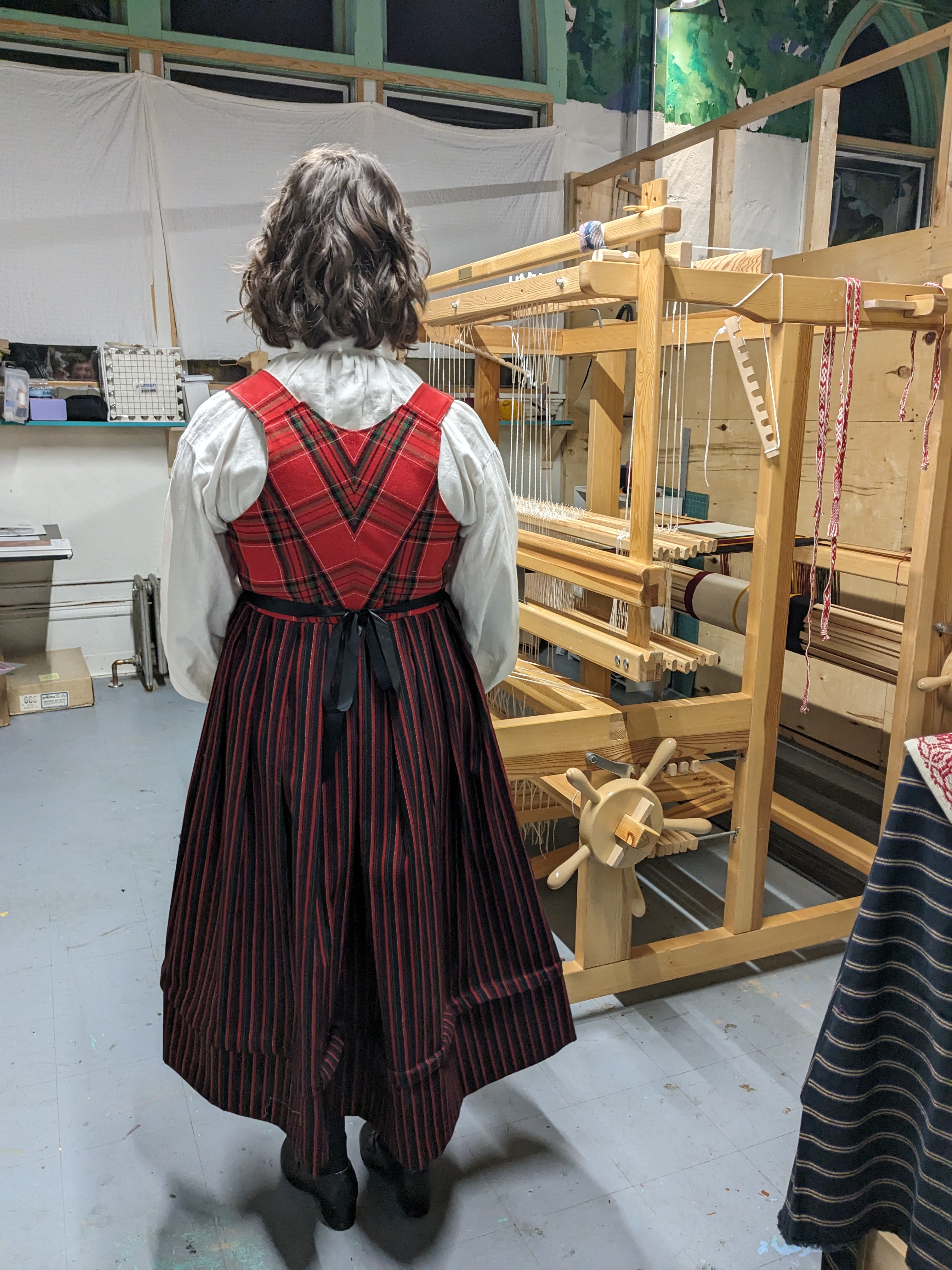
Outfit Repeater: Recreating Childhood Folk Costume Twenty-Two Years Later
Caroline Feyling brings things full circle by creating a Gudbrandsdal bunad, designed after a bunad she wore as a girl. In her newest blog post, she shares about the rich history and family connections found in this Norwegian folk costume.
On top of the piano in my father’s home is a childhood photo of me. In the picture I am about four years old and am wearing a Norwegian folk costume while holding my cat by the armpits. Those who know me now would say that I haven’t changed a bit.
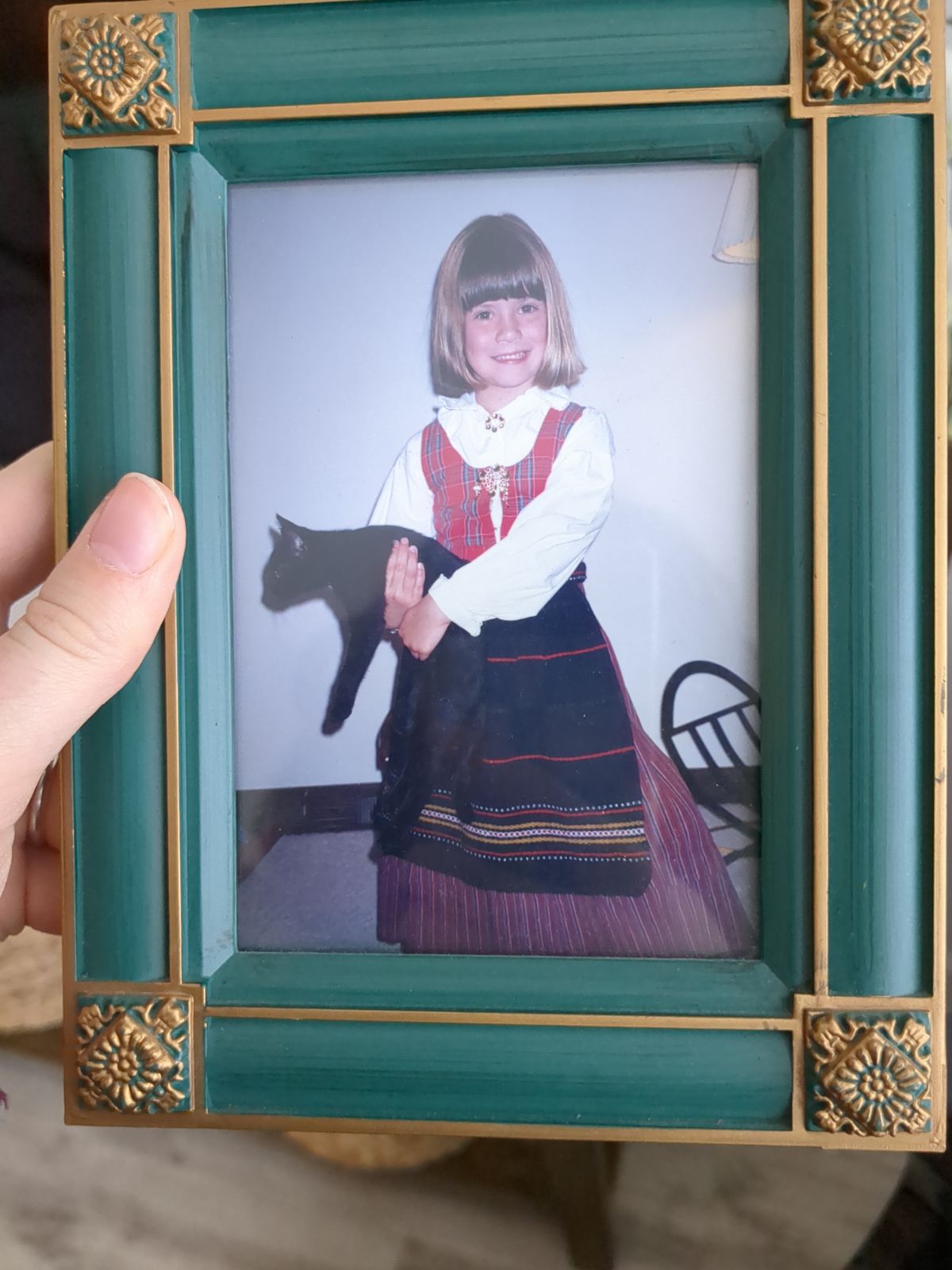
This photo served as the inspiration for my most recent folk costume project. Norwegian national costume, also known as bunad, is incredibly popular in Norway. It is common for people to receive a bunad for their confirmation ceremony and then keep it for the rest of their lives. There is also a tradition of passing down bunad from generation to generation. The bunad I am wearing in the photo is the same one that my aunt wore when she was a child, and my gold jewelry was a gift from my grandmother.
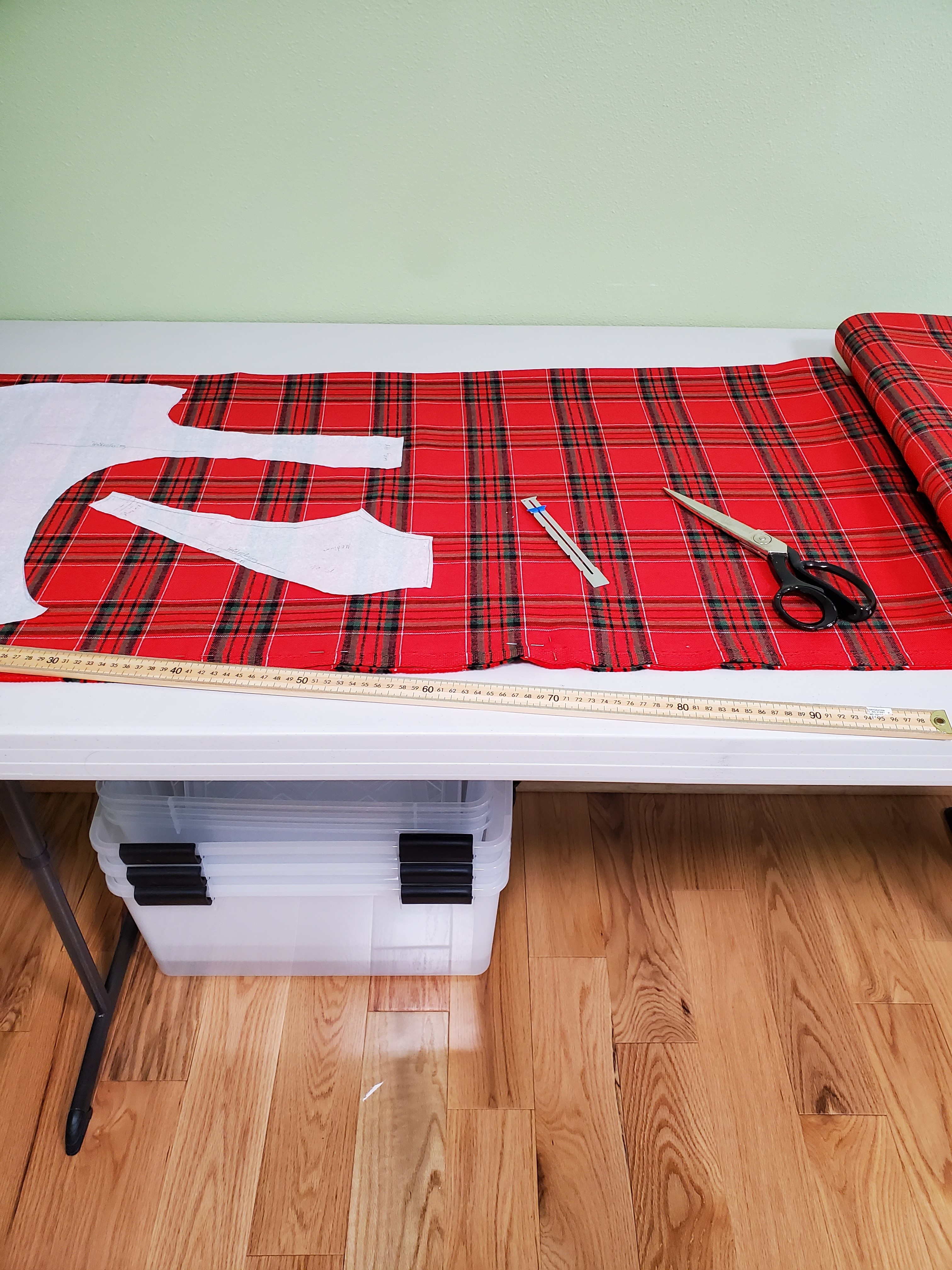
The family connection in my childhood costume was a big influence for me when choosing which folk costume I would make for my adult self. The pattern in the photo is one called “rondastakk” which comes from the Gudbrandsdal region of Norway. The rondastakk features a distinctive bodice shape that is featured in a large number of Gudbrandsdal bunads. Several of my female family members have costumes that have this silhouette. Their bunads have an abundance of rosemaling inspired embroidery. I wanted a Gudbrandsdal bunad so that I could be in line with those my family had. Ultimately it was the fact that I had the same bunad as a child that led me to choose a rondastakk as my bunad pattern.
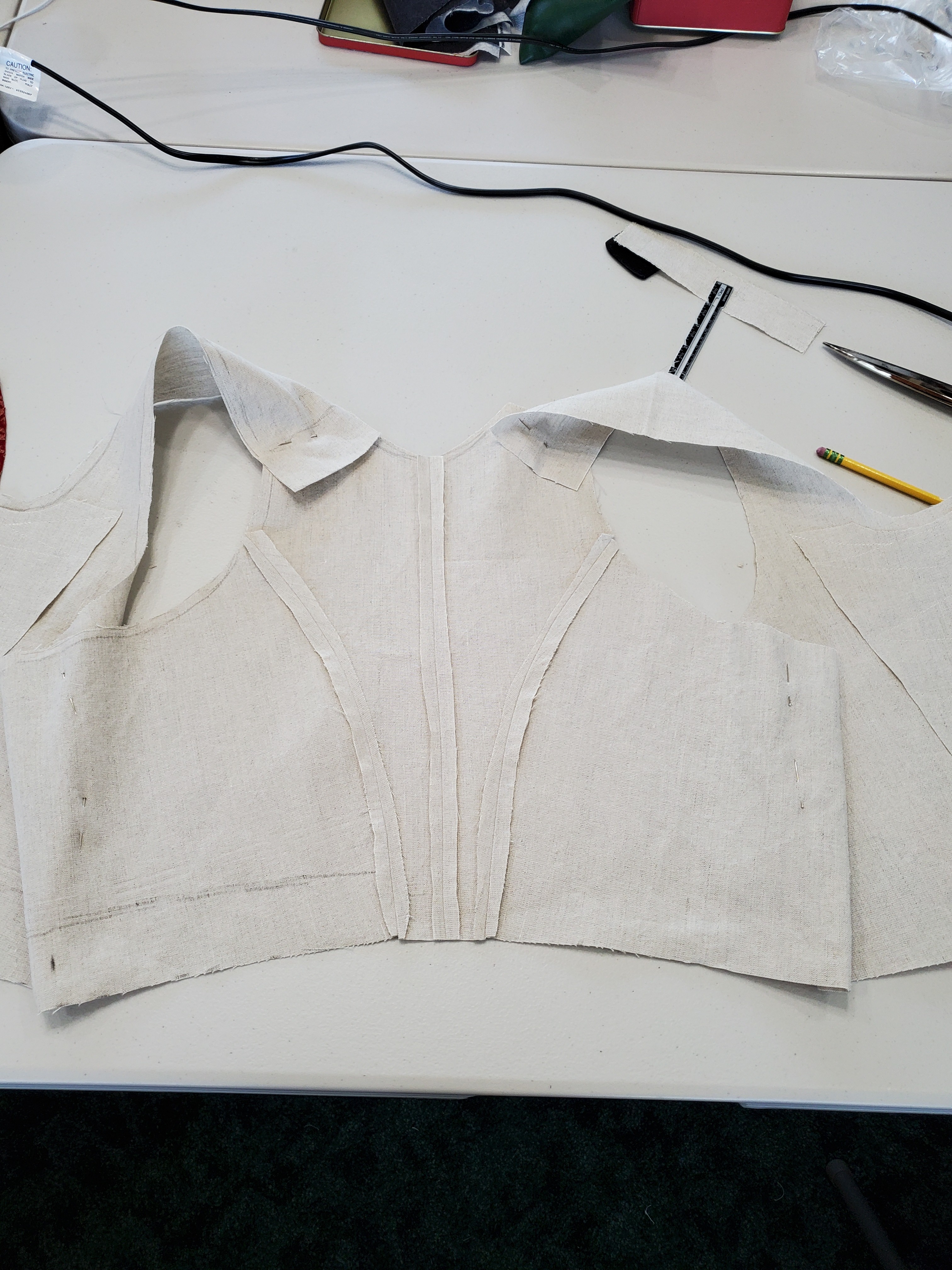
I began the construction of my rondastakk back in June during a course taught by Gina Nylund of Bunad Creations. Under her tutelage I fit my mockup, cut my pattern pieces, and spent hours matching plaid. Constructing the bodice was fiddly, but I was most challenged by the skirt pleats. On many bunads the pleated skirts do not have a pattern but are instead mathematically calculated based off of the bodice measurements. This allows for a beautiful customized fit. The issue I ran into was getting my calculations to work in reality. In the end there was a little fudging towards the back, but don’t tell anyone!
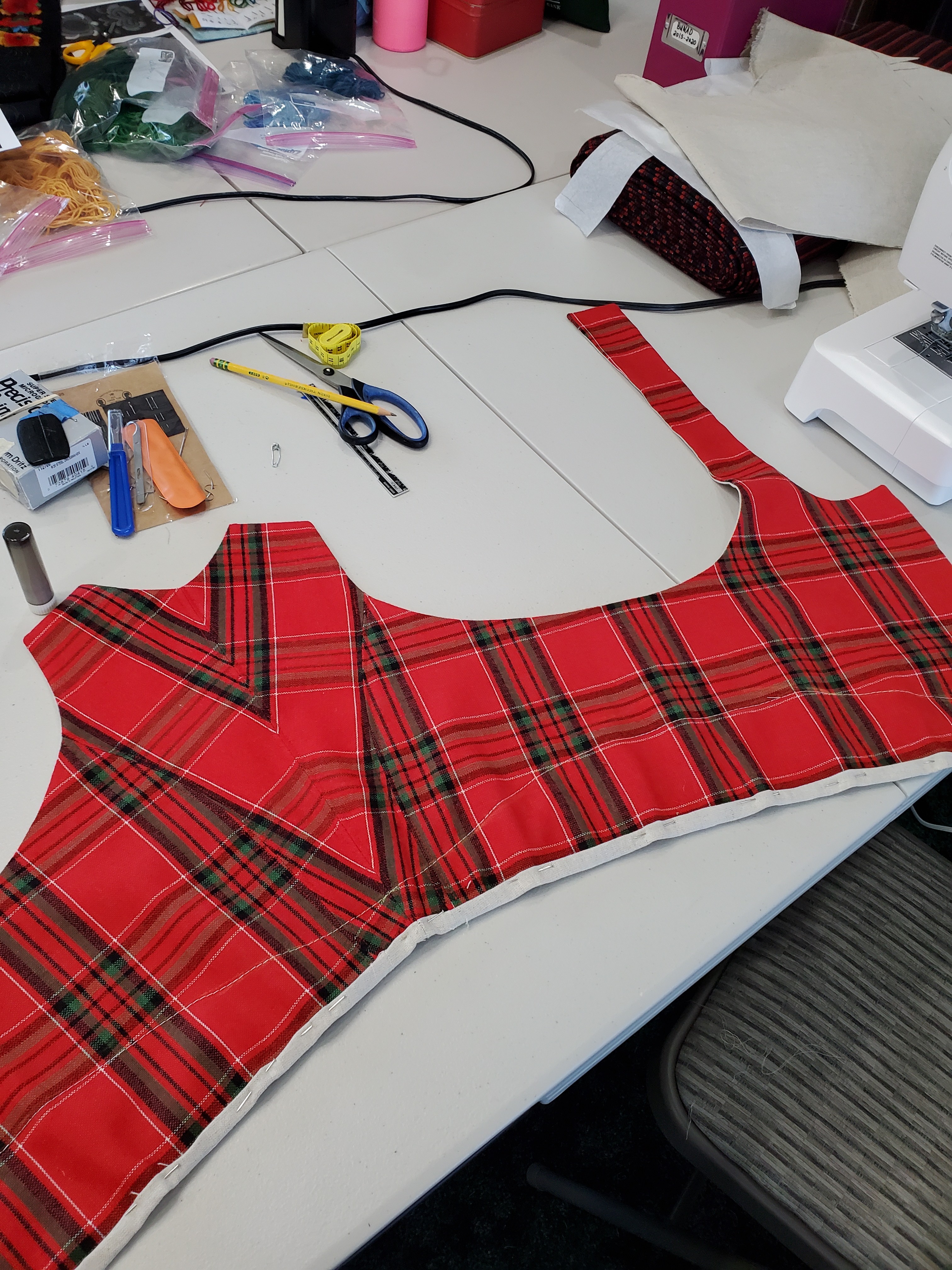
After five months of not working on my bunad I finished sewing my apron in mid-November so that I would have it completed for Winterers' Gathering. Wearing it for the first time felt amazing. I struggle to feel proud of my work, but this is one I definitely take pride in. The process of making it was incredibly exciting but also brought a sense of calmness. While working on cultural heritage projects I often think of all the women who have sewn the exact same garments. Wearing my rondastakk reminds me of the photo of me from twenty-two years earlier and how so much and yet so little has changed since then. After all these years I still love wearing my folk costume and hugging cats.
